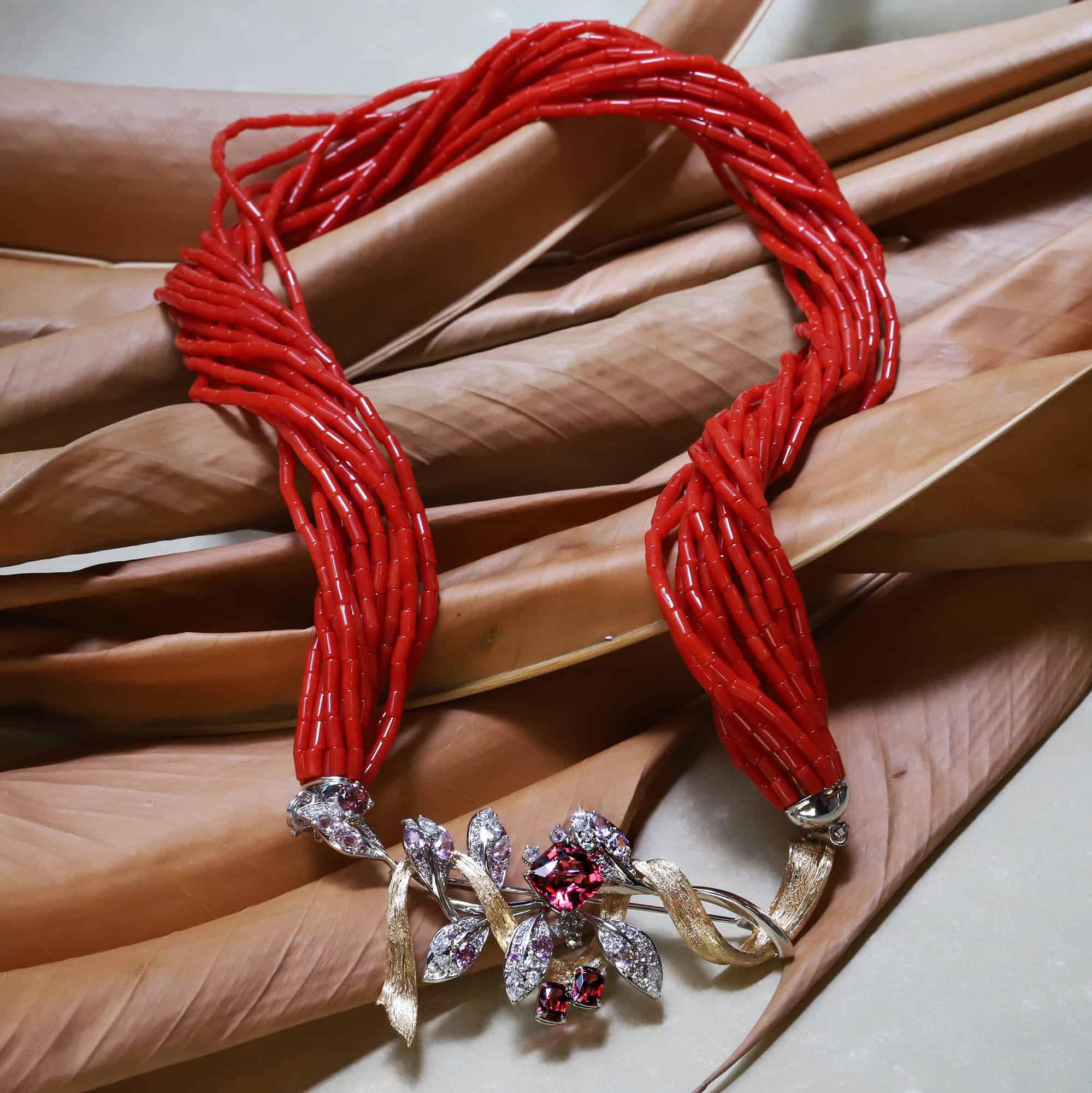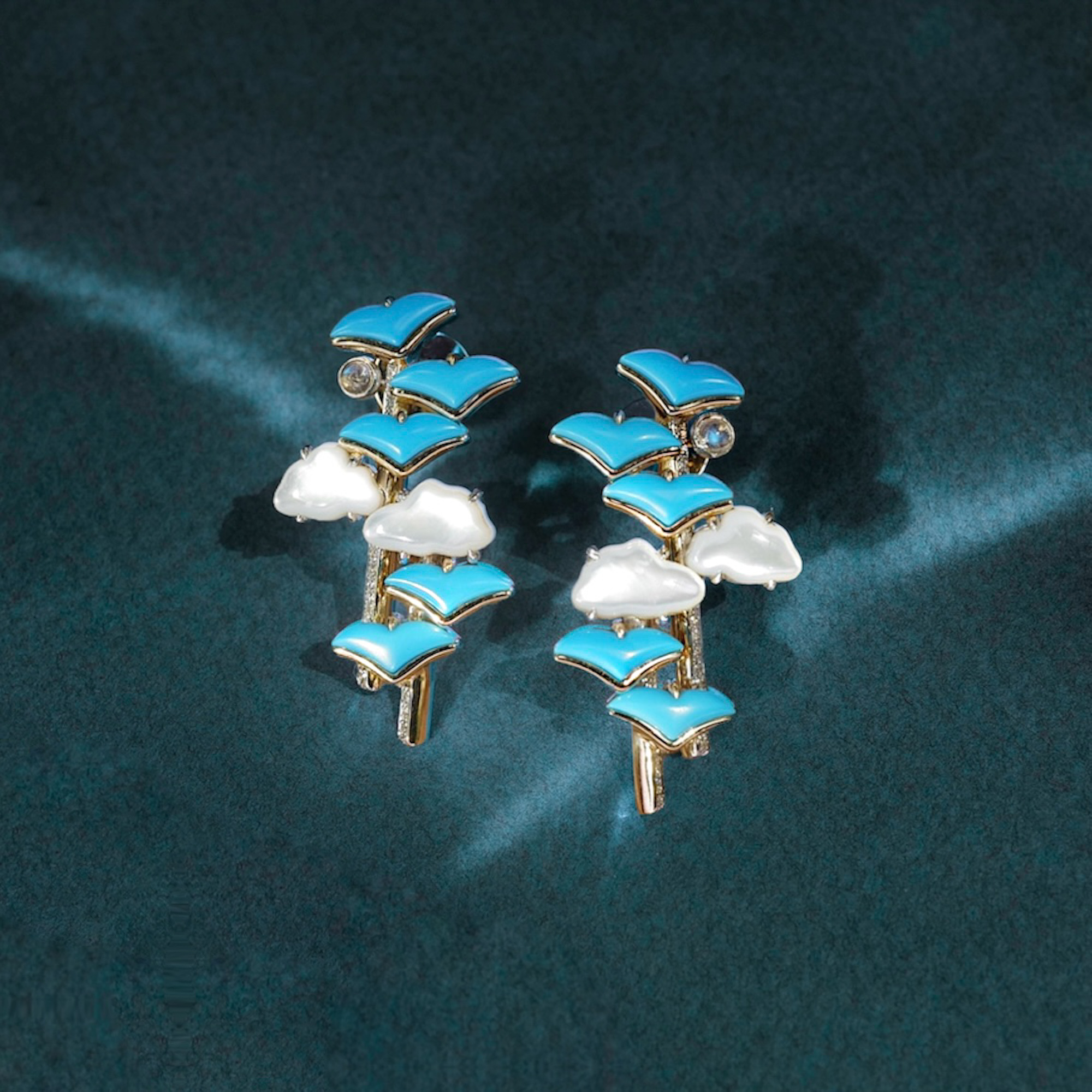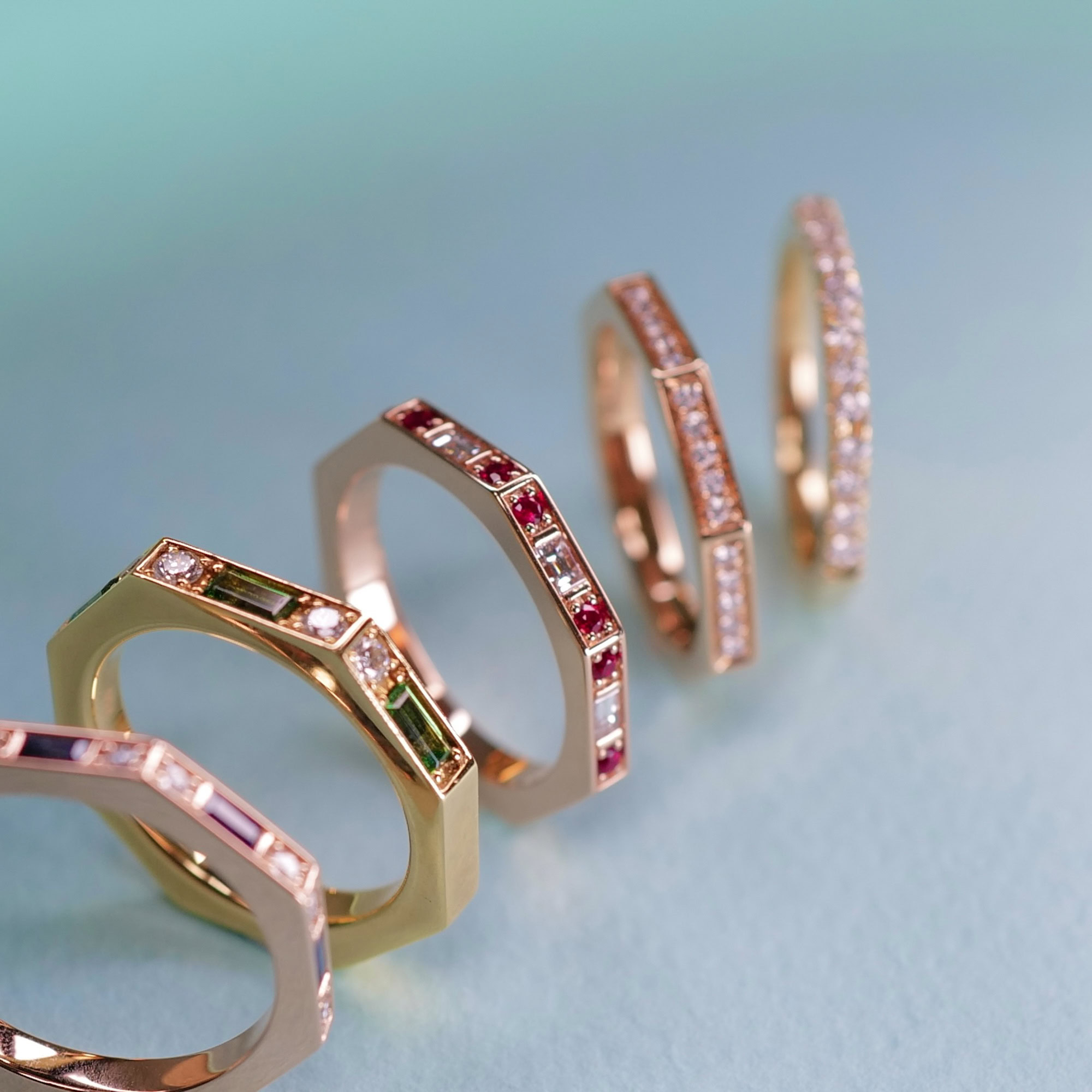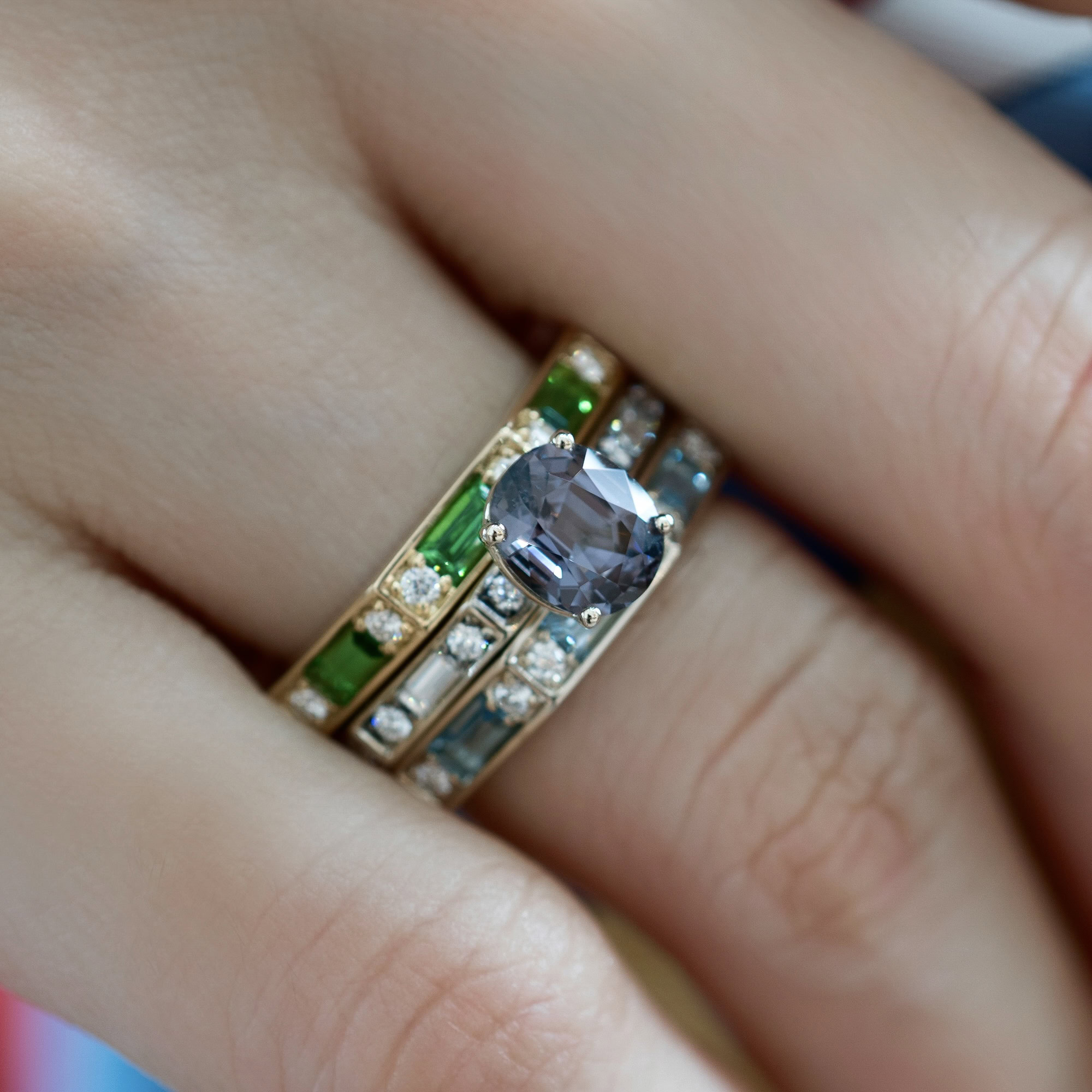In the universe of fine-coloured gemstones, few hold as much appeal as the passionate reds. As timeless symbols of love, power, and unbridled elegance, red gemstones have graced the most opulent pieces throughout history, leaving a lasting impression on jewellery connoisseurs.
From the blood-red rubies that adorned the crowns of ancient rulers to the fiery depths of garnets, each red gemstone carries a unique tale. Let us take you along with their deep- rooted cultural significance and unwavering allure that have transcended generations!
Historical significance and meaning
Red gemstones have forever been in alignment with passion and power. A stand made stronger by its close association with nobility over the course of history: they have adorned royalty’s crowns for centuries.
Many believe them to be mighty amplifiers of creative energy, and notoriously, they also signify great enthusiasm for life.
Take the Ruby, for one. Its emblematic red hue is a match only to its rich symbolism.
Exactly 96 intensely bright Burmese rubies embellish one of Queen Elizabeth II’s most famed pieces of jewellery: a splendid tiara. The gems themselves were a wedding present from the people of Burma, and in accordance with their traditional beliefs, they were gifted with the intent to protect her majesty from evil forces and illness.
To this date, the most expensive coloured gemstone ever sold at auction in the United States of America is—you guessed it—a ruby. Known as the “Jubilee Ruby,” it sold for $14.2 million.
According to records, they were traded along China’s North Silk Road as early as 200 BC. Legend has it that Chinese people valued them so highly that Emperor Kublai Khan offered them to an entire city in exchange for a large specimen.
During the Middle Ages, red spinels were commonly mistaken for and used in place of rubies in crown jewels.
Centuries ago, rulers of lands in Europe and Asia would have their names engraved on the most important gems in their collections.
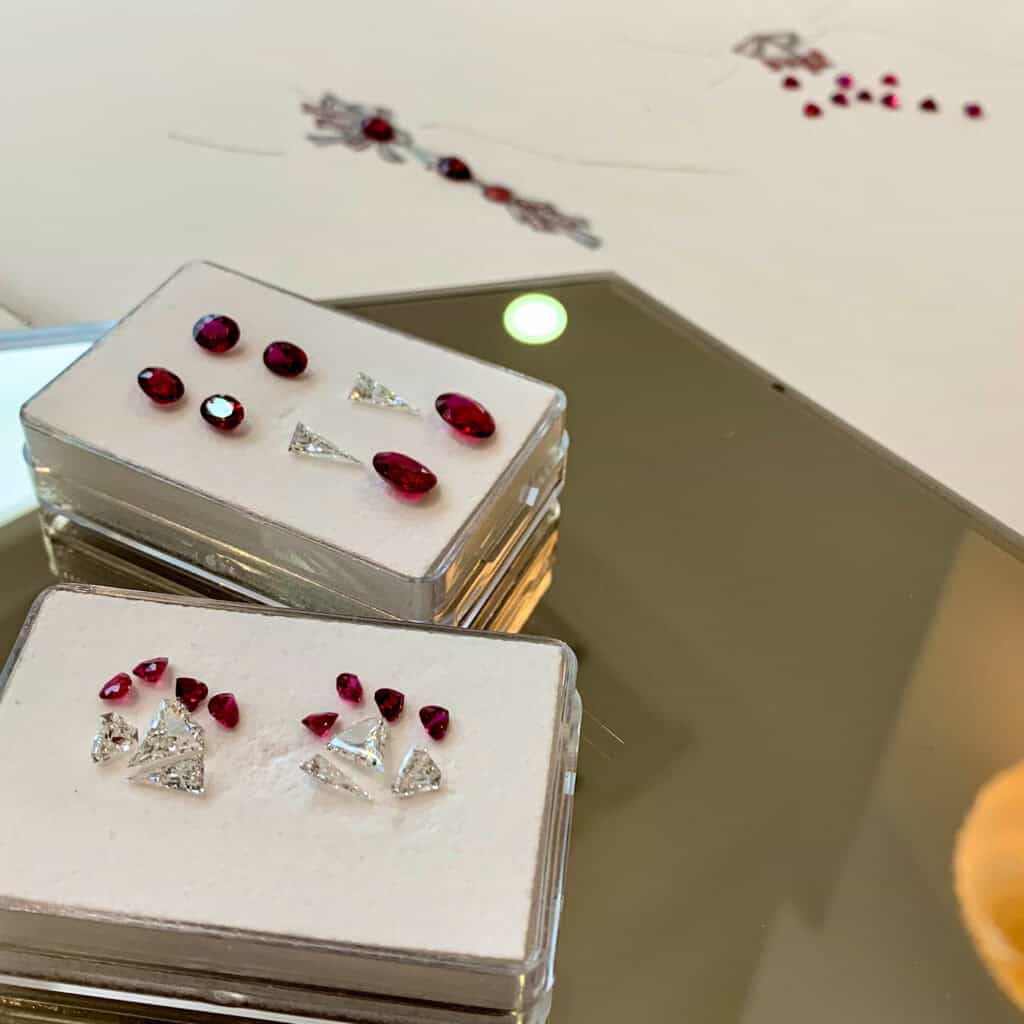
Thankfully, many of those have survived uncut to this date, and so their rich history has been passed on.
The single-refractive flaming-vivid red spinels are striking enough to rival Rubies’s supremacy. In fact, the world’s most famous one, namely “The Black Prince’s Ruby” is, as a matter of fact, NOT a ruby at all, but—you guessed it—a red spinel! The grand, semi- polished, crimson octahedron sits at the forepart of Britain’s Imperial State Crown. Quite later on, around the mid-1800s mark, scientists and dealers in the field came to the discovery that spinel and ruby were two distinct minerals.
A few days ago, Chinese New Year festivities shone bright red all around us. As it happens, this colour is hugely popular in this part of the globe and carries a lot of meaning.
In this rich culture, the five elements—water, fire, wood, metal, and earth—are directly associated with colours. Red being a match to the “fire element.” According to the Chinese Five Elements Theory, this is the shade to being upon passion, vitality, and renewal.
To this date, colours still majorly impact numerous Chinese customs and beliefs. Many people believe that red is the most auspicious hue and will ward off evil.
Naturally, red gemstones are particularly coveted, not only for their glamorous appearance but also due to their intrinsic meaning.
A comprehensive guide to Rubies
Sometimes referred to as the King of Precious Stones, the value of rubies stretches way beyond monetary substance.
Derived from the same mineral as sapphires, one can say they are close relatives. They are formed under conditions of excessive heat and pressure underground. Iron, titanium, and chromium: this triad contained in their mineral constitution is what gives a ruby its characteristic deep red pigmentation.
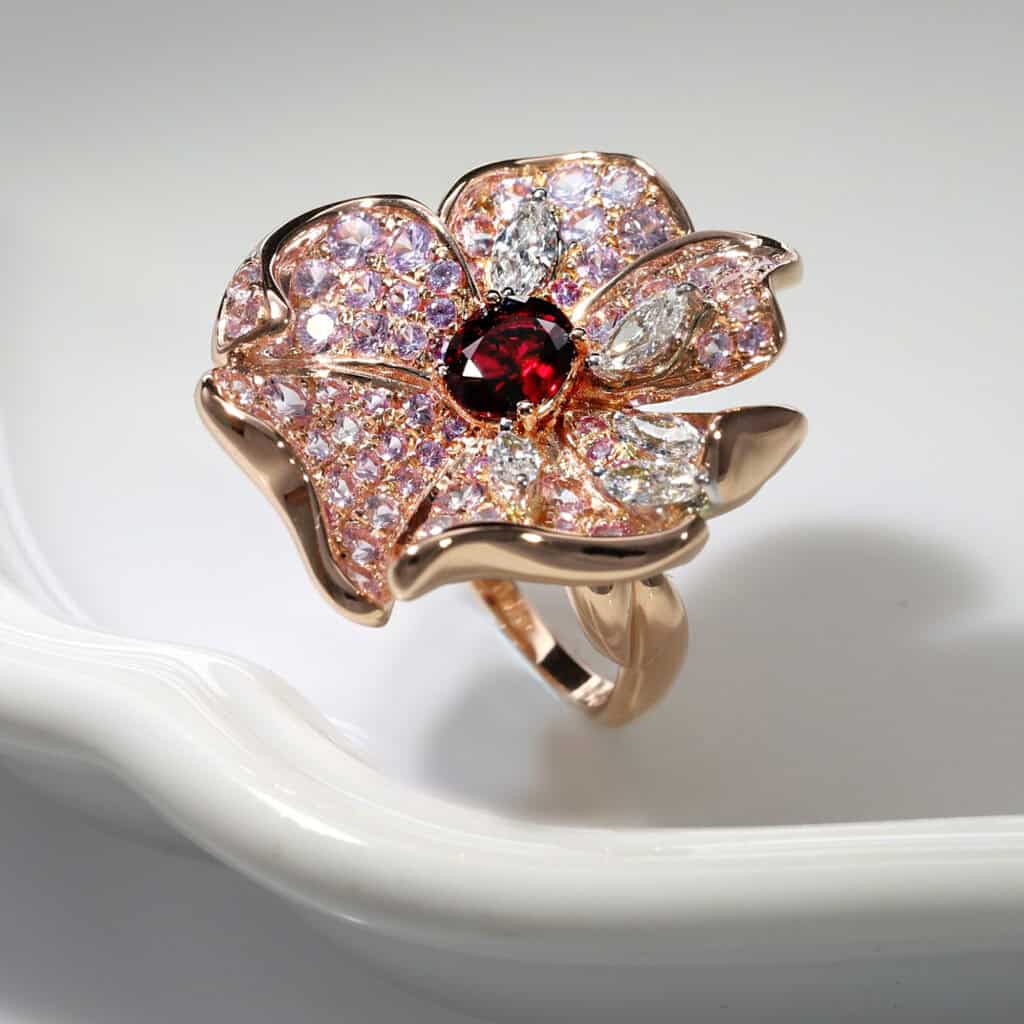
While we can trace their origins to a couple of hundred years before Christ, their allure has certainly been carried on to present times.
Rubies have been encountered in parts of India and Africa, as well as Thailand. Most recently, large deposits were discovered underneath the receding ice shelf of Greenland.
While they have been extensively cherished by many cultures for centuries, it was only in 1990, when Myanmar began mining, that heat treatment was introduced as a means to enhance their hue (a practice not at all uncommon in the coloured gemstone sphere).
Unsurprisingly, the naturally super-saturated exemplars became more esteemed than ever.
Traditionally, the ones from Burma were considered the finest, though some political factors play a major role. And as of now, most gems originate from Sri Lanka and Thailand.
How to assess a Ruby’s worth
All across the globe, they are renowned for their intense blood colour and durability, graded 9 on the Moh’s scale of hardness; this also signifies that they are suitable for being faceted in any cut.
One can estimate their value by weighting three main components: hue, saturation, and tone. Respectively connoting colour, brightness, and shade.
Just like their famed siblings, Sapphires, they also have primary and secondary hues: primary being red and secondary pinks, purples, and oranges. The overall most desired colour is a rich red with hints of blue undertones.
To measure their clarity, you must look for imperfections. The most premium gems will be as clear as possible.
While popular demand goes up and down, their worth remains consistent. Meaning they are, truly, a brilliant investment, as it is very unlikely for a quality piece to devalue.
Sufficient to say, very few gemstones possess such a rich history and are held at such high status as the legendary Ruby. A fine ruby piece of jewellery is a treasure to be handed down for generations to come.
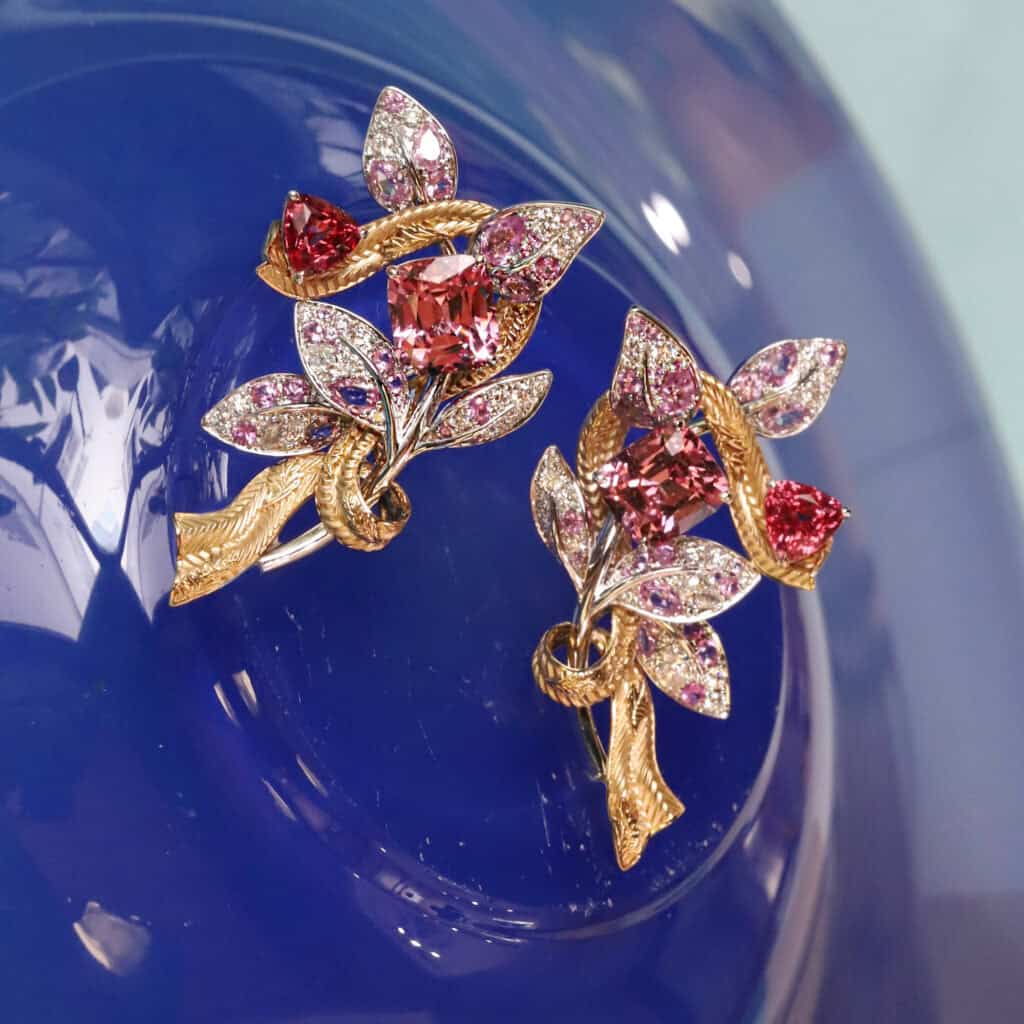
Amazing Red Spinels
Once somewhat overlooked, these gems are now rightfully gaining attention, with their numerous qualities becoming widely recognised.
Spinels have emerged as a highly sought-after gemstone, and for good reason. Available in a vibrant array of colours, it’s the pink and blue hues that are particularly in demand. However, the spectrum also includes orange, purple, grey, and even black varieties. Yet, it’s the almost neon red spinels that are especially celebrated for their vividness.
In the realm of gemstones, durability and longevity are of paramount importance. The resistance of a material to scratching is measured by its “hardness,” with the “Mohs hardness scale” serving as the benchmark for this property. A high rating on this scale indicates a gemstone’s ability to resist wear, ensuring it can be cherished for many years and possibly passed down through generations.
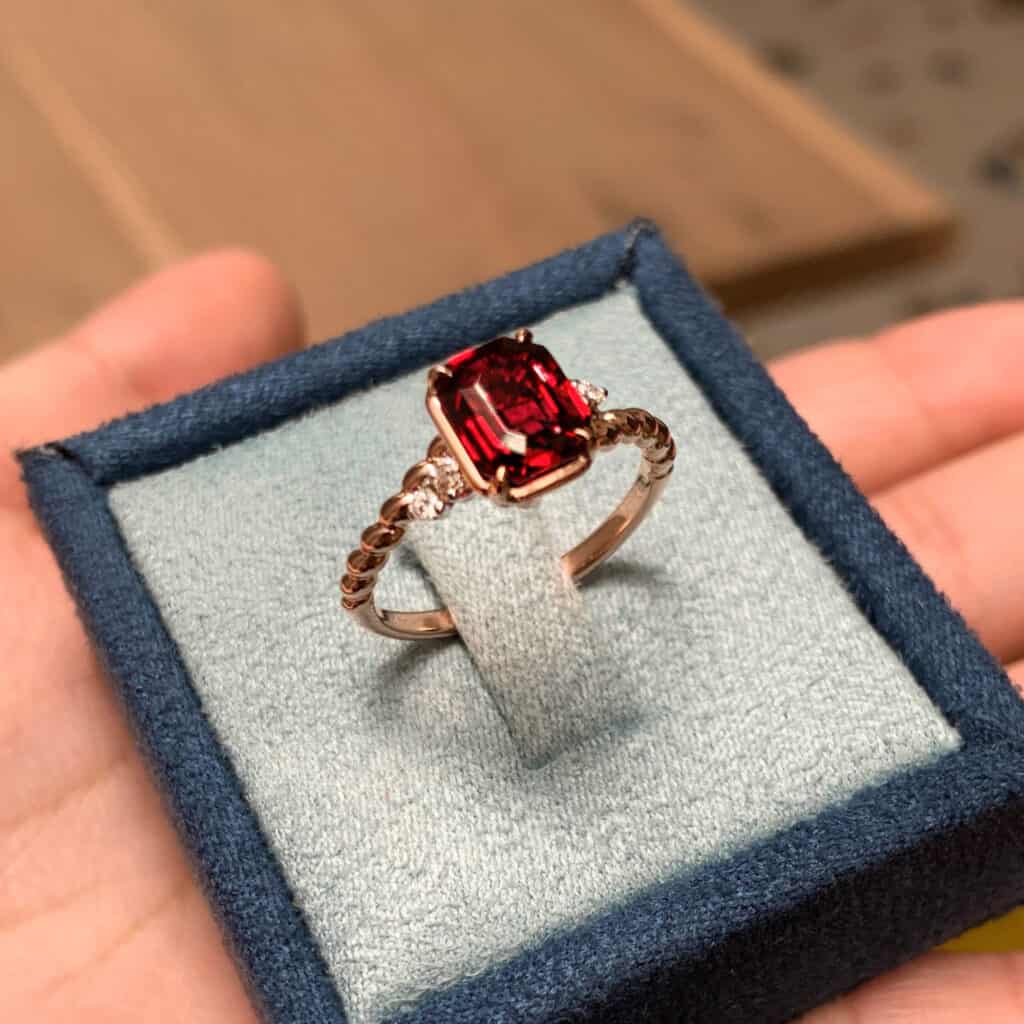
With a Mohs hardness rating of 8, out of a maximum of 10, spinels are not only hard but also remarkably tough, making them resistant to breaking and scratching. These qualities render them one of the most durable gemstones, ideal for everyday jewellery.
While rubies have long been celebrated, spinels are only now receiving the recognition they deserve.
Experiencing a spinel under light is a breathtaking event; its exceptional brilliance is a result of light reflection off its surface, an aspect known as “lustre”. Spinels excel in accepting high polish, showcasing a lustre that is truly mesmerising, rivalled only by zircon and diamond. This characteristic enhances their allure, making them a gemstone worth admiring.
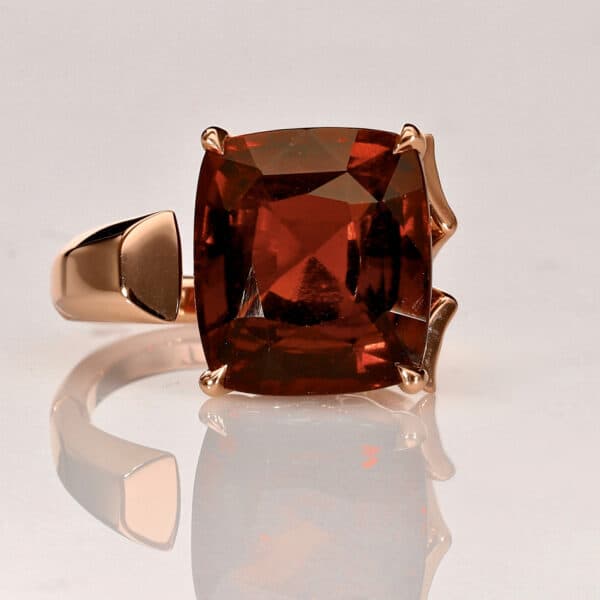
The Splendour of Red Garnets
Red garnets, a radiant member of a vast gem family, are distinguished not by a single species but by a shared crystal structure that unites various varieties. Among these, the deep red almandines are widely recognised, presenting a stunning array of red shades, from burgundy to fiery scarlet, reminiscent of their pomegranate seed-like namesake from the Latin ‘garanatus’.
These gems are celebrated for their singular red palette, ranging from the vibrant pinkish-red of Rhodolite to the rare andradites, which dance with a fiery intensity that rivals even that of diamonds. The Malaya garnets are particularly captivating, with their unique ability to shift from a soft pink to a deep, dramatic red.
On the Mohs scale of hardness, red garnets typically score a solid 7, indicating their suitability for daily wear, with variations depending on the exact variety. Their robustness is matched by their excellent toughness, ensuring durability with proper maintenance. This hardiness makes them an esteemed choice for both jewellers and gem enthusiasts, ensuring that their rich red lustre endures as a timeless symbol of passion and beauty.
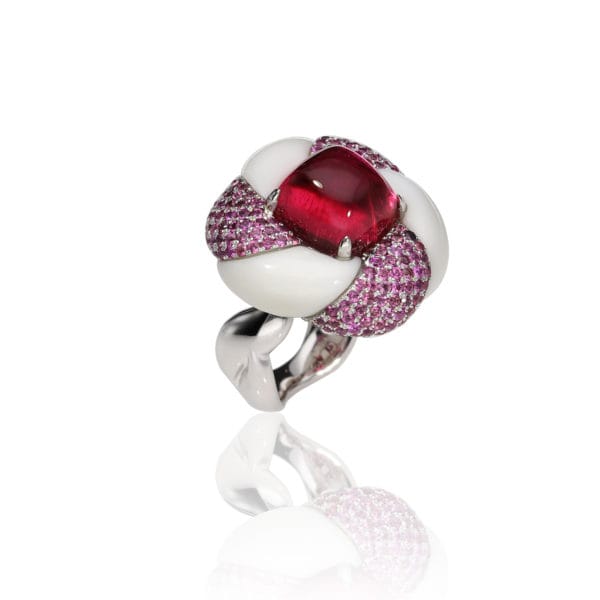
Discovering Rubellite Tourmalines
Let’s turn our attention to the intriguing ‘rubellite’ tourmaline, which offers a slightly different take on the red spectrum. Read on to uncover the facets of this gemstone!
Tourmalines are a chromatic phenomenon in the mineral world, celebrated for their chemical complexity and unrivalled colour diversity. Among the array of stunning shades, red and pink variations are known as ‘rubellite’, while the enchanting blues go by names like ‘indigolite’ or ‘indicolite’.
The rubellite, in particular, dazzles with its depth of colour, a result of manganese presence. Its vibrancy varies with the concentration of this element. Finding a rubellite free of inclusions is a rarity; these natural features often grace the stone, adding to its unique appeal.
Tourmalines are not only diverse in colour but also notable for their quality. Some varieties showcase remarkable clarity. When expertly cut and finished, they unveil their intrinsic beauty, bursting with rich colours and a mesmerising sparkle.
While rubellites may not always present a pure red, ranging from deep crimson to softer pinks, their hues are nonetheless extraordinary. They embody a special variety within the tourmaline family, deserving of acclaim for their distinctive, naturally occurring beauty.
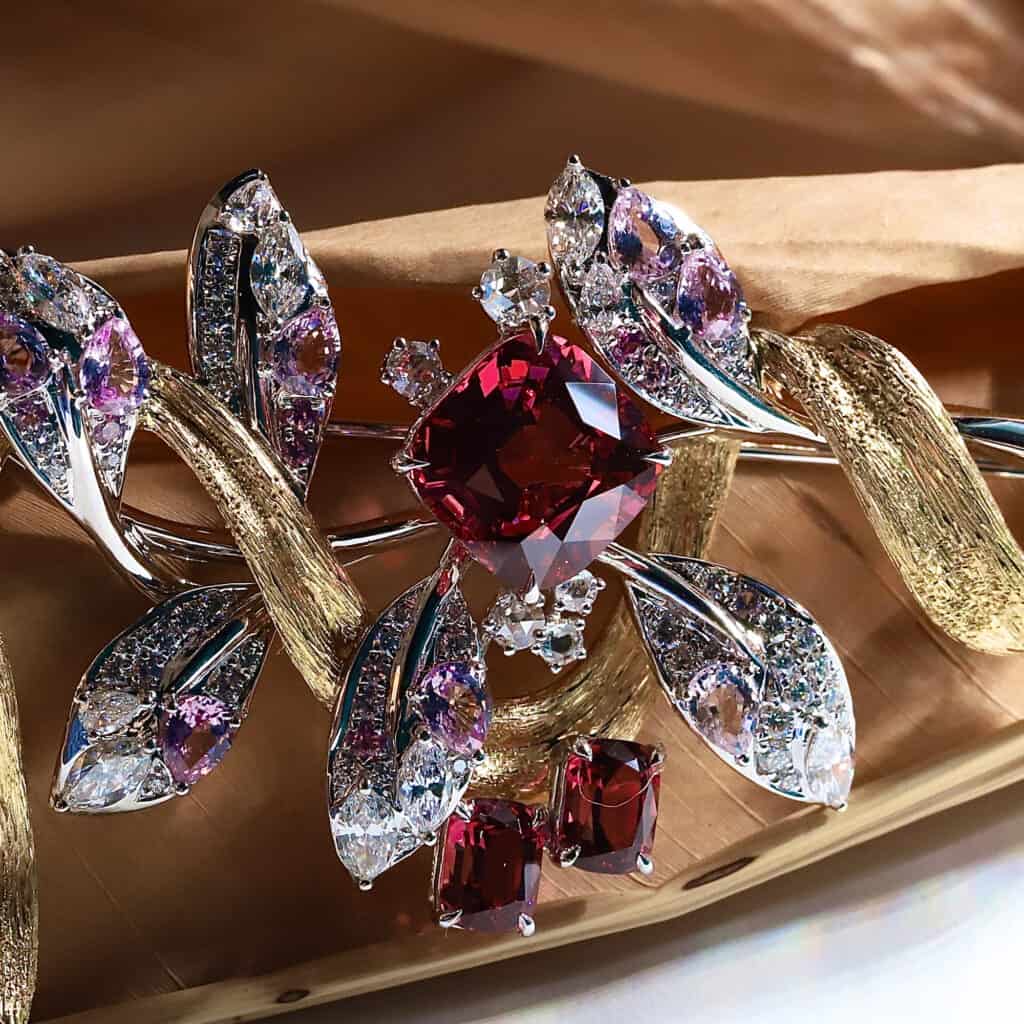
In summary, red gemstones carry a rich cultural heritage and an enduring charm. We’ve journeyed from the regal rubies that graced the crowns of monarchs to the hidden splendour of red spinels, the captivating hues of rubellites, and the versatile spectrum of garnets.
In closing, if the allure of red gemstones and the bespoke artistry of fine jewellery beckon, Calla Lily’s Fine Jewellers invite you to delve into a world of custom-designed elegance. Our commitment to personalisation ensures that each piece reflects the unique tastes of its wearer. We welcome you to arrange a visit to our atelier, where our curated selection of coloured gemstones awaits to capture your imagination and adorn your personal narrative.

